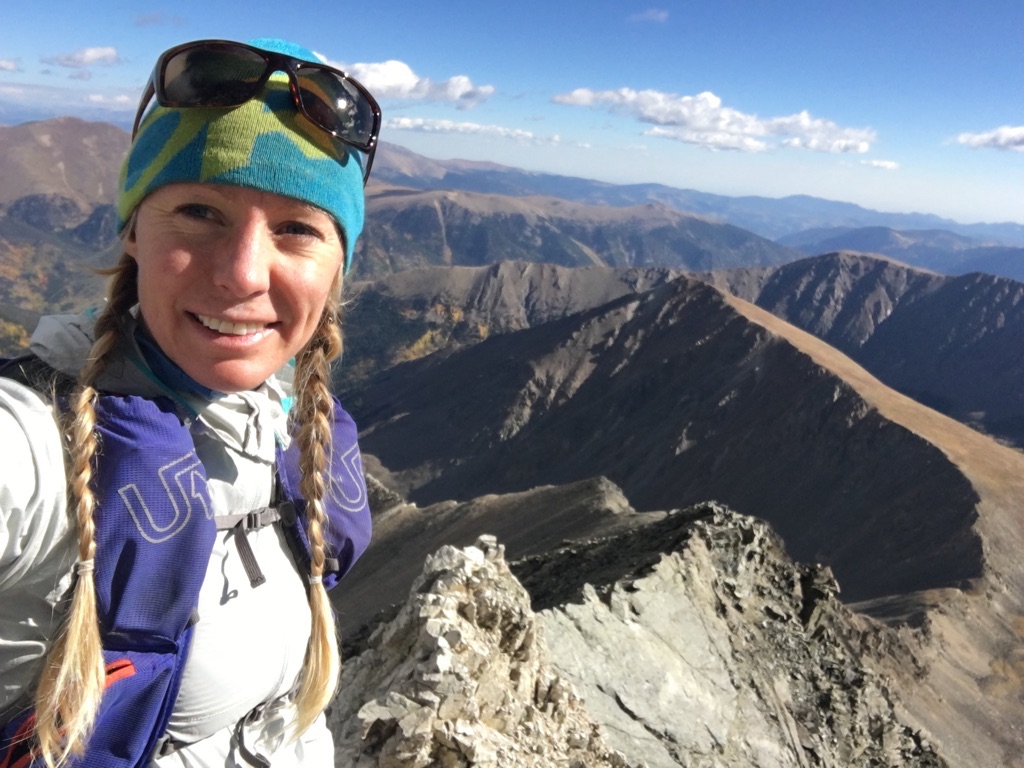As I tried to fall asleep, flashes of the ridgeline flickered behind my eyelids. Clips from the videos I’d perused earlier online, images I’d seen on Instagram. I was planning to meet a friend to try a popular fourth-class ridge scramble up a 14,000-foot peak in Colorado’s Front Range. And I was nervous.
Neither of us had been up the route before. And I had enough climbing experience to know when it comes to third- and fourth-class unroped scrambling, sometimes ratings aren’t as uniform as one might expect. Alpine scrambling exists in the sometimes murky space between hiking and technical climbing and mountaineering, and can involve off-trail navigation and route finding, requiring both hands and feet to cross terrain that can be steep and exposed. Plus, the social media feeds I scroll through are constantly full of people blurring the lines even further—running up alpine routes that most others rope up for and free soloing local climbing routes others would certainly rope up for. I wondered what my own risk-versus-reward meter would say tomorrow.
In the end, the route felt challenging but still fun—without raising red flags cautioning me to stop or turn around. My friend and I chatted and laughed most of the way, and enjoyed donuts at the top. It was a gratifying step toward a deeper and broader knowledge of the mountains, which is important. It’s easy to get caught up in what others do, to feel pressure to move past our personal comfort zones toward some particular goal. Or, conversely, to get wrapped up in fear about something that, when it comes down to it, is not nearly as scary as we imagined. Here are five ways to help make sure you’re following your own path in the mountains, especially in that gray area between hiking and climbing.

Take stock of objective hazards.
Rockfall, ice, icefall, avalanches, wind and other people on the route can all affect the objective safety of a scramble. And if you’re not roped up in third- and fourth-class terrain, the risks can have high consequences. It’s extra important to notice what might affect you on the route and take that into account. If ice or snow would make the route beyond your level of risk tolerance, you might need to be ready to turn around if that’s what you encounter. Also, by packing a harness, shorter rope and a few pieces of gear to build an anchor, you can belay short sections of high exposure. It’s important to remember that just because a scramble isn’t rated as a technical climb doesn’t mean it can’t have life-or-death consequences.
Listen to your gut.
If something doesn’t feel right to you, acknowledge that feeling—there may be a good reason your instincts are turning on alarm bells. Sometimes joy in the mountains comes when we push through our fears—but, really, the point of it all is to have fun and get home safely. So if something doesn’t look or feel like fun anymore, tune in to what your inner voice is saying.
Notice outside motivations.
Peer pressure can affect your decision making in the outdoors, whether it’s coming directly from your partner’s mouth or indirectly through watching others on social media. Pay attention to where your mind goes when you think, “What if I were to stop here?” Would you be letting someone else down? Or yourself? Stopping or turning around takes bravery and a true confidence in yourself, which isn’t always easy to find. But listening to others’ voices instead of your own when you’re evaluating risk can lead you to make decisions you might regret.
Pick good partners.
It’s all fine and dandy to be in tune with your emotions and aware of your own skill set, but if you don’t feel like you can openly communicate with your partner, that all goes down the tubes. Going out with people who either have similar expectations and experience, or who are familiar with yours and happy to accommodate them, is key to staying happy and safe. Before you hit the trail, discuss your objective, expectations and what hazards you might find along the way. Be open about your concerns and what kind of conditions might be deal breakers for you. Ice on the route? An impending storm? More exposure than you bargained for? If you don’t already know, discuss what previous experience you each have and what your level of comfort is on different types of terrain. Then check in with your partner throughout the day. Are you both still feeling psyched about the level of risk?
Never beat yourself up for being conservative.
Any day moving safely in the mountains is a good day. It’s important to remember that if you find yourself feeling disappointed about not completing an objective. If you feel yourself getting hung up on the idea of turning around, it can help to focus on the views, the joy of hiking along the way, the conversations with friends and the privilege of breathing fresh mountain air. It’s satisfying to accomplish a goal, but it sure feels great to be outside and know you’ll be safe to go out another day.
